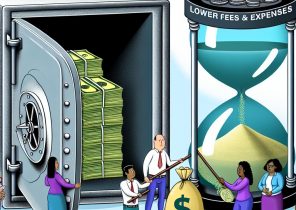Understanding the Importance of an Emergency Fund
Before diving into the world of investments, one fundamental financial step often recommended is establishing an emergency fund. This fund acts as a safety net, providing resources to manage unexpected financial challenges without jeopardizing long-term investment strategies.
What is an Emergency Fund?
An emergency fund is a reserved amount of money set aside to cover unforeseen expenses such as medical emergencies, car repairs, or sudden unemployment. It is a financial cushion designed to absorb the impact of life’s unpredictable events.
The Purpose: The primary purpose of an emergency fund is to provide financial security and flexibility. Rather than scrambling to find money when emergencies arise, you have immediate access to funds, reducing stress and uncertainty.
The Amount: While it is generally advised to have enough funds to cover three to six months of living expenses, individual needs may vary. Factors affecting this include job stability, existing debts, and family size. For a single person with stable employment, a three-month fund may suffice. However, a larger family with variable income sources might aim for six to nine months of coverage.
Reasons to Prioritize an Emergency Fund
1. Avoid Liquidating Investments: In times of financial distress, having an emergency fund can prevent the need to liquidate investments. Selling investments during market downturns can result in significant losses, impacting your financial goals. An emergency fund ensures that your investments can remain intact, allowing them to grow over the long term without being affected by immediate cash needs.
2. Financial Security: With an emergency fund in place, you gain financial security and peace of mind. This allows you to make more strategic decisions about your investments without pressure from immediate financial demands. You are less likely to be forced into making hasty financial decisions that may not align with your overall strategy.
3. Interest and Penalties: Without an emergency fund, one might resort to high-interest debts or incur penalties from early withdrawal of retirement funds. Both scenarios can be detrimental to financial health. High-interest debts can quickly spiral out of control, leading to a debt trap, while early withdrawals from retirement savings can derail your long-term financial goals.
How to Build an Emergency Fund
Constructing an emergency fund requires strategic planning and discipline. Here are some steps to help you get started:
Set a Realistic Goal
Begin by setting a specific goal based on your monthly living expenses. Consider all essential costs such as rent, utilities, groceries, and any debt obligations. This will give you a clear target for how much you need to save.
Choose the Right Account
Open a separate savings account to distinguish these funds from regular savings or checking accounts. This helps to minimize the temptation to dip into the fund for non-emergency expenses. Look for accounts that offer competitive interest rates to maximize your savings growth.
Establish Consistent Contributions
Consider setting up automatic transfers from your primary account to gradually build this fund. Consistent contributions, regardless of their size, are key to building your fund over time.
Contribution Strategies
– Allocate a certain percentage of your income each month towards this goal. A common guideline is to save at least 20% of your income, with a portion dedicated to your emergency fund.
– Use bonuses, tax refunds, or other windfalls to boost your emergency savings. These unexpected funds can significantly shorten the time it takes to reach your goal.
– Regularly assess and adjust your contributions based on lifestyle changes. If your expenses increase or your income changes, recalibrate your savings strategy accordingly.
Tackle Existing Debt
While building an emergency fund is crucial, it’s also important to manage any existing debts. High-interest debts can erode your financial stability, making it vital to strike a balance between debt repayment and saving.
Advantages of Maintaining an Emergency Fund
Psychological Benefits: Knowing you have a financial safety net equips you with more confidence to make life decisions, such as changing jobs or pursuing further education, without fearing immediate financial repercussions.
Improved Money Management: Developing the discipline to save consistently helps instill good financial habits, which can translate into better budget management and financial literacy overall.
Challenges and Pitfalls to Avoid
Building an emergency fund requires commitment and patience. Here are some common challenges and pitfalls to avoid:
Neglecting to Replenish: After using your emergency fund, prioritize rebuilding it. Failure to do so leaves you vulnerable to the next financial crisis.
Mixing Funds: Avoid using your emergency fund for non-emergencies. Keep this fund distinct from other savings to ensure it is always available when genuinely needed.
Further Reading
To explore more about building and managing financial resources, consider visiting [Investopedia’s Guide to Emergency Funds](https://www.investopedia.com) or [NerdWallet’s Financial Tips](https://www.nerdwallet.com).
Conclusion
Establishing an emergency fund is a crucial step before engaging in investment activities. This financial buffer not only shields your investments from premature liquidation but also supports overall financial stability. By ensuring readiness for unexpected expenses, you position yourself to engage with investment opportunities confidently and strategically. Proper management of an emergency fund also enhances your broader financial literacy, fostering a more stable and resilient financial future.
This article was last updated on: June 9, 2025








